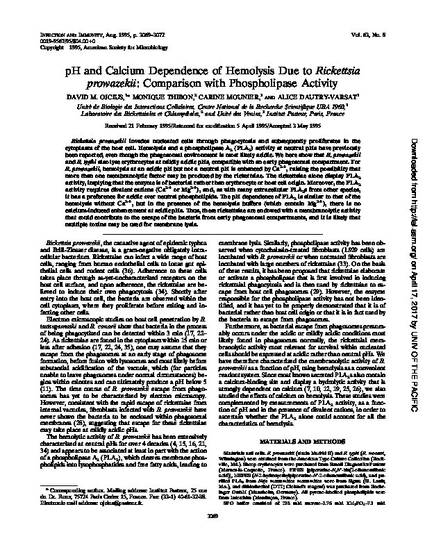
Rickettsia prowazekii invades nucleated cells through phagocytosis and subsequently proliferates in the cytoplasm of the host cell. Hemolysis and a phospholipase A2 (PLA2) activity at neutral pHs have previously been reported; even though the phagosomal environment is most likely acidic. We here show that R. prowazekii and R. typhi also lyse erythrocytes at mildly acidic pHs, compatible with an early phagosomal compartment. For R. prowazekii, hemolysis at an acidic pH but not a neutral pH is enhanced by Ca2+, raising the possibility that more than one membranolytic factor may be produced by the rickettsiae. The rickettsiae alone display PLA2 activity, implying that the enzyme is of bacterial rather than erythrocyte or host cell origin. Moreover, the PLA2 activity requires divalent cations (Ca2+ or Mg2+), and, as with many extracellular PLA2s from other species, it has a preference for acidic over neutral phospholipids. The pH dependence of PLA2 is similar to that of the hemolysis without Ca2+, but in the presence of the hemolysis buffers (which contain Mg2+), there is no calcium-induced enhancement at acidic pHs. Thus, these rickettsiae are endowed with a membranolytic activity that could contribute to the escape of the bacteria from early phagosomal compartments, and it is likely that multiple toxins may be used for membrane lysis.
Available at: http://works.bepress.com/david-ojcius/32/
